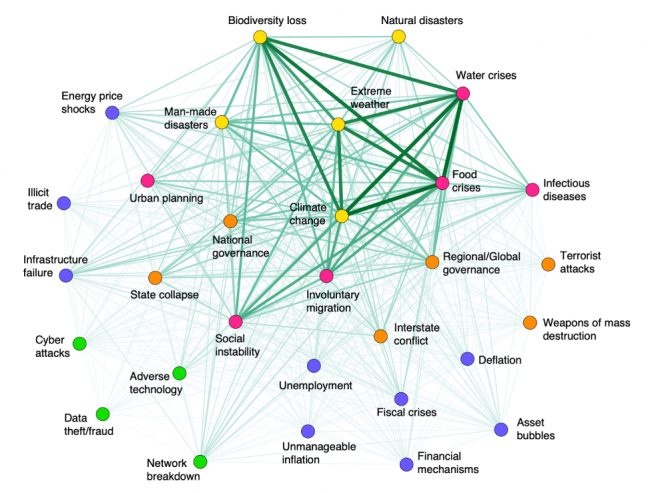A bit of genetic material that skipped from animal to human, and from local market to international stage in a matter of weeks, is now a concern in every single health, social, and economic sphere around the world. If nothing else, the coronavirus pandemic perfectly illustrates the complex, interlinked challenges we face in 2020.
To work towards solutions to these large-scale problems, we must get a handle on the links, tensions, and trade-offs within our entire planetary system. That’s why our international research organization, Future Earth, recently published Our Future on Earth 2020, which synthesizes the latest science on the state of our planet, and connects the dots among the developments we are currently experiencing, from pandemics to fires and rising populism. Drawing on insights from researchers in the physical and social sciences, and from over 20 different countries, the report helps to explain what is driving current events and how we might move in a more sustainable direction.
For example, published within the report is a survey of over 200 scientists who identified five issues (climate change, extreme weather, biodiversity loss, food, and water) as a critical nexus of risk that could lead to a global systemic crisis. (See Figure 1 with full survey results available online.) The survey chapter calls for the world’s academics, business leaders, and policymakers to ensure these five global risks are treated as interacting systems, rather than addressed one at a time, in isolation. Now, building on this work and in light of the COVID-19 pandemic, the survey team has also launched a new rapid foresight survey to better understand how people’s perception of global risks are changing in response to this crisis, and where opportunities lie to rebuild towards a more resilient, sustainable, and equitable future.

Indeed, the report underlines that nexus thinking and opportunities extend across all social, economic, and environmental spheres. For example, transformations in the finance sector (especially for economic recovery plans in light of COVID-19) can boost investment in renewable energy and resilient communities. To counter the denial of complexity that comes with populism, grassroots organizations, citizen movements, and indigenous groups continue to make the link between social justice and environmental protection. And as highlighted in the report and in Future Earth’s Sustainability in the Digital Age initiative, we must approach climate mitigation and adaptation as a social challenge, rather than just a technical challenge that focuses on emissions reductions in high carbon-emitting sectors. Tackling the climate crisis and working towards a just and equitable digital future are inherently interconnected agendas, where we can leverage the capabilities of the digital age to disrupt the rules, norms, power structures, and mindsets underpinning all sectors and constraining climate actions.
Published in English, Spanish, and French, and with a Mandarin translation on the way, Our Future on Earth 2020 also shines a spotlight on the importance of international cooperation to drive us onto a globally sustainable path. The forward by Gro Brundtland, former Chair of the United Nations World Commission on Environment and Development, explicitly calls for a “return to multilateralism” and “a “restructured international economic system of co-operation.”
So even under restrictions imposed by the coronavirus, it is critical that sustainability remains high on the global agenda in 2020, with just a decade left to achieve United Nations Sustainable Development Goals. Efforts like the UN Convention on Biological Diversity’s post-2020 biodiversity targets, and a push from major business coalitions to accelerate a zero-carbon transition in the private sector, must go on.
As outlined in the report’s introduction; “science now provides an important view of our planet from the macro to micro scales and across deep time, giving us new insight into the Anthropocene. But how will this knowledge be harnessed and used?” This is a fundamental question, and one where we have a chance to truly make our future more sustainable or equitable. Our continuing future on Earth is a story we are all creating together.